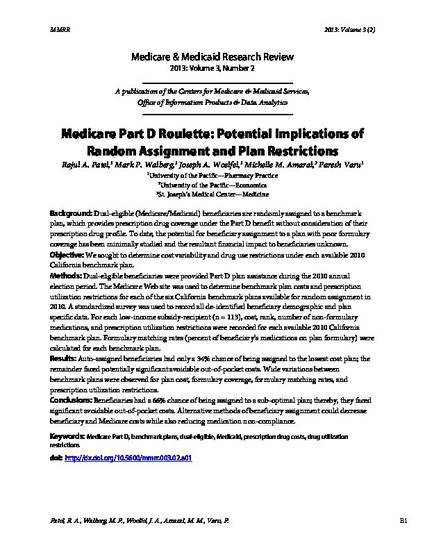
Background: Dual-eligible (Medicare/Medicaid) beneficiaries are randomly assigned to a benchmark plan, which provides prescription drug coverage under the Part D benefit without consideration of their prescription drug profile. To date, the potential for beneficiary assignment to a plan with poor formulary coverage has been minimally studied and the resultant financial impact to beneficiaries unknown.
Objective: We sought to determine cost variability and drug use restrictions under each available 2010 California benchmark plan.
Methods: Dual-eligible beneficiaries were provided Part D plan assistance during the 2010 annual election period. The Medicare Web site was used to determine benchmark plan costs and prescription utilization restrictions for each of the six California benchmark plans available for random assignment in 2010. A standardized survey was used to record all de-identified beneficiary demographic and plan specific data. For each low-income subsidy-recipient (n = 113), cost, rank, number of non-formulary medications, and prescription utilization restrictions were recorded for each available 2010 California benchmark plan. Formulary matching rates (percent of beneficiary’s medications on plan formulary) were calculated for each benchmark plan.
Results: Auto-assigned beneficiaries had only a 34% chance of being assigned to the lowest cost plan; the remainder faced potentially significant avoidable out-of-pocket costs. Wide variations between benchmark plans were observed for plan cost, formulary coverage, formulary matching rates, and prescription utilization restrictions.
Conclusions: Beneficiaries had a 66% chance of being assigned to a sub-optimal plan; thereby, they faced significant avoidable out-of-pocket costs. Alternative methods of beneficiary assignment could decrease beneficiary and Medicare costs while also reducing medication non-compliance.
Available at: http://works.bepress.com/joseph-woelfel/42/
